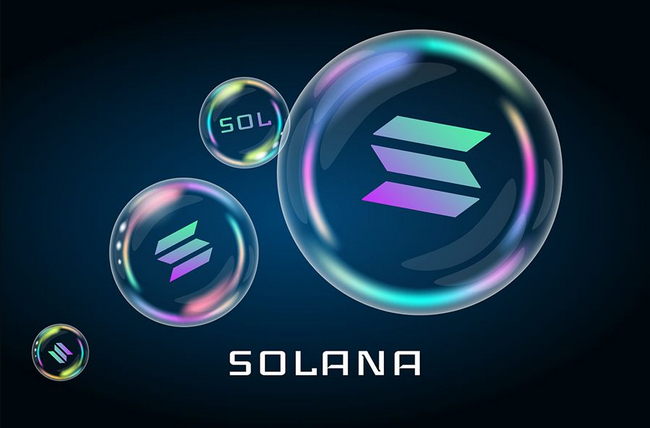-
 Bitcoin
Bitcoin $103,480.9011
0.34% -
 Ethereum
Ethereum $2,493.9186
6.69% -
 Tether USDt
Tether USDt $1.0000
0.00% -
 XRP
XRP $2.4417
3.56% -
 BNB
BNB $657.1939
3.40% -
 Solana
Solana $173.3178
1.02% -
 USDC
USDC $0.9999
-0.01% -
 Dogecoin
Dogecoin $0.2372
15.72% -
 Cardano
Cardano $0.8350
6.38% -
 TRON
TRON $0.2615
-0.42% -
 Sui
Sui $4.0547
3.23% -
 Chainlink
Chainlink $16.9173
5.66% -
 Avalanche
Avalanche $24.7388
6.00% -
 Stellar
Stellar $0.3091
4.36% -
 Shiba Inu
Shiba Inu $0.0...01625
8.67% -
 Hedera
Hedera $0.2157
7.63% -
 Hyperliquid
Hyperliquid $25.4124
2.11% -
 Toncoin
Toncoin $3.3953
3.93% -
 Bitcoin Cash
Bitcoin Cash $423.6665
3.41% -
 Polkadot
Polkadot $5.1181
5.59% -
 UNUS SED LEO
UNUS SED LEO $8.6280
-0.69% -
 Litecoin
Litecoin $104.1244
5.06% -
 Monero
Monero $328.6736
6.73% -
 Pepe
Pepe $0.0...01369
11.01% -
 Bitget Token
Bitget Token $4.8458
8.47% -
 Dai
Dai $0.9999
-0.02% -
 Pi
Pi $0.7401
2.21% -
 Ethena USDe
Ethena USDe $1.0003
0.00% -
 Uniswap
Uniswap $6.9790
9.74% -
 Bittensor
Bittensor $453.4058
6.32%
how to buy solana on phantom
To acquire SOL, the native token of the high-performance Solana blockchain, you can follow a detailed guide that involves installing Phantom, funding your wallet, connecting to a DEX, selecting a price, executing the trade, and monitoring its completion.
Nov 11, 2024 at 03:36 am

Delving into the Realm of Solana: A Comprehensive Guide to Acquiring SOL on Phantom
Overview
Solana, a high-performance blockchain protocol, has gained widespread recognition for its lightning-fast transaction processing capabilities and low transaction fees. If you're eager to participate in the Solana ecosystem, acquiring SOL, the native token of the network, is the first crucial step. This in-depth guide will meticulously guide you through the process of purchasing SOL using Phantom, a popular and user-friendly crypto wallet specifically designed for the Solana ecosystem.
Step 1: Install and Configure Phantom
- Visit the official Phantom website (https://phantom.app/) and select the "Download" option for your preferred platform.
- Follow the on-screen instructions to install the Phantom browser extension or mobile app.
- Create a new wallet by selecting the "Create a New Wallet" option.
- Securely store your secret recovery phrase, as it's essential for wallet recovery in case of any unforeseen circumstances.
Step 2: Fund Your Wallet
- Purchase fiat currency (e.g., USD, EUR) using a crypto exchange that supports buying SOL, such as Coinbase, Binance, or Kraken.
- Withdraw the purchased SOL from the exchange and send it to your Phantom wallet address. To obtain your wallet address, click on the "Receive" tab in Phantom.
Step 3: Connect Phantom to a DEX (Decentralized Exchange)
- In Phantom, click on the "Swap" tab.
- You will be redirected to the decentralized exchange (DEX) integrated within Phantom.
- Choose the trading pair you desire, such as SOL/USDC.
Step 4: Select the Best Price and Execute the Trade
- Analyze the order book and choose the best price for your SOL purchase.
- Input the amount of SOL you wish to acquire.
- Review and confirm the transaction details.
- Click on the "Swap" button to execute the trade.
Step 5: Monitor and Confirm the Transaction
- The transaction will be processed on the Solana blockchain.
- You can track the progress in the "History" tab of Phantom.
- Once the transaction is complete, the purchased SOL will be added to your Phantom wallet balance.
Additional Tips
- Consider using a hardware wallet for enhanced security when storing large amounts of SOL.
- Keep your Phantom wallet and secret recovery phrase secure and confidential.
- Explore other features of Phantom, such as staking and yield farming, to maximize the benefits of your SOL holdings.
- Stay up-to-date on the latest developments and news within the Solana ecosystem to make informed investment decisions.
Disclaimer:info@kdj.com
The information provided is not trading advice. kdj.com does not assume any responsibility for any investments made based on the information provided in this article. Cryptocurrencies are highly volatile and it is highly recommended that you invest with caution after thorough research!
If you believe that the content used on this website infringes your copyright, please contact us immediately (info@kdj.com) and we will delete it promptly.
- XRP Whales Accumulate 880M Tokens As Bulls Aim to Break Through Resistance
- 2025-05-11 01:10:12
- EchoStar Corporation (NASDAQ: SATS) closed at $24.19 on May 9, gaining 1.43% after reporting mixed first-quarter 2025 results.
- 2025-05-11 01:10:12
- Bitcoin (BTC) Still Struggles to Reach the Symbolic Target of $150,000, Despite a Recent Rebound to $104,000
- 2025-05-11 01:05:12
- Here’s How Many Bitcoin (BTC) Holders Are Profiting at the Moment
- 2025-05-11 01:05:12
- Belo Horizonte city council votes to declare the city the “Capital of Bitcoin.”
- 2025-05-11 01:00:12
- Crypto Market Cap Reaches $103K as Bitcoin ($BTC) Price Surges 0.30%
- 2025-05-11 01:00:12
Related knowledge

What is Ethereum’s Slashing mechanism and how to punish malicious behavior?
Feb 20,2025 at 03:08am
Key PointsOverview of slashingDifferent types of slashing in EthereumIncentives and consequences of slashingIdentifying and reporting slashed validatorsOngoing discussions and potential improvementsEthereum's Slashing Mechanism: Punishing Malicious BehaviorEthereum's slashing mechanism is an essential tool for ensuring network security and punishing mal...

What is the verifier node of Ethereum and how to become a verifier?
Feb 19,2025 at 06:00pm
The Verifier Node of Ethereum: A Comprehensive GuideKey Points:What is a Verifier Node?How to Become a Verifier NodeResponsibilities and Rewards of a Verifier NodeMinimum Requirements for Becoming a Verifier NodePotential Difficulties in Running a Verifier Node1. What is a Verifier Node?A Verifier Node is an independent entity on the Ethereum network th...

What is Ethereum’s staking, and how to participate and earn money?
Feb 19,2025 at 04:37pm
Key Points:Understanding Ethereum's Staking MechanismSteps to Participate in StakingBenefits and Rewards of StakingSecurity and Risk ConsiderationsTechnical Requirements and Hardware OptionsPotential Challenges and Troubleshooting TipsFAQs on Ethereum StakingWhat is Ethereum's Staking?Proof-of-Stake (PoS) is a consensus mechanism used in blockchain netw...

What is Ethereum’s DAO (Decentralized Autonomous Organization) and how does it work?
Feb 20,2025 at 03:12am
Key PointsDefinition and Structure of a DAOGovernance and Decision-Making in DAOsBenefits and Use Cases of DAOsChallenges and Limitations of DAOsWhat is Ethereum's DAO (Decentralized Autonomous Organization) and How Does It Work?Definition and Structure of a DAOA Decentralized Autonomous Organization (DAO) is an innovative governance and management fram...

What is Ethereum's multi-signature wallet and how to improve security?
Feb 20,2025 at 02:18pm
Key Points:Understanding the Concept of a Multi-Signature WalletBenefits and Drawbacks of Multisig WalletsRequirements for Setting Up a Multisig WalletStep-by-Step Guide to Generating a Multisig WalletImplementing Strategies for Enhanced Security1. Understanding the Concept of a Multi-Signature WalletA multi-signature (multisig) wallet in the Ethereum e...

What is Ethereum's oracle and how to provide data for smart contracts?
Feb 21,2025 at 01:30am
Key Points:Understanding the concept of oracles in EthereumExploring different types of oraclesDetailed guide on how to provide data for smart contractsAddressing potential challenges and considerationsWhat is Ethereum's Oracle?Oracles are crucial components in the Ethereum ecosystem, enabling smart contracts to access real-world data and off-chain even...

What is Ethereum’s Slashing mechanism and how to punish malicious behavior?
Feb 20,2025 at 03:08am
Key PointsOverview of slashingDifferent types of slashing in EthereumIncentives and consequences of slashingIdentifying and reporting slashed validatorsOngoing discussions and potential improvementsEthereum's Slashing Mechanism: Punishing Malicious BehaviorEthereum's slashing mechanism is an essential tool for ensuring network security and punishing mal...

What is the verifier node of Ethereum and how to become a verifier?
Feb 19,2025 at 06:00pm
The Verifier Node of Ethereum: A Comprehensive GuideKey Points:What is a Verifier Node?How to Become a Verifier NodeResponsibilities and Rewards of a Verifier NodeMinimum Requirements for Becoming a Verifier NodePotential Difficulties in Running a Verifier Node1. What is a Verifier Node?A Verifier Node is an independent entity on the Ethereum network th...

What is Ethereum’s staking, and how to participate and earn money?
Feb 19,2025 at 04:37pm
Key Points:Understanding Ethereum's Staking MechanismSteps to Participate in StakingBenefits and Rewards of StakingSecurity and Risk ConsiderationsTechnical Requirements and Hardware OptionsPotential Challenges and Troubleshooting TipsFAQs on Ethereum StakingWhat is Ethereum's Staking?Proof-of-Stake (PoS) is a consensus mechanism used in blockchain netw...

What is Ethereum’s DAO (Decentralized Autonomous Organization) and how does it work?
Feb 20,2025 at 03:12am
Key PointsDefinition and Structure of a DAOGovernance and Decision-Making in DAOsBenefits and Use Cases of DAOsChallenges and Limitations of DAOsWhat is Ethereum's DAO (Decentralized Autonomous Organization) and How Does It Work?Definition and Structure of a DAOA Decentralized Autonomous Organization (DAO) is an innovative governance and management fram...

What is Ethereum's multi-signature wallet and how to improve security?
Feb 20,2025 at 02:18pm
Key Points:Understanding the Concept of a Multi-Signature WalletBenefits and Drawbacks of Multisig WalletsRequirements for Setting Up a Multisig WalletStep-by-Step Guide to Generating a Multisig WalletImplementing Strategies for Enhanced Security1. Understanding the Concept of a Multi-Signature WalletA multi-signature (multisig) wallet in the Ethereum e...

What is Ethereum's oracle and how to provide data for smart contracts?
Feb 21,2025 at 01:30am
Key Points:Understanding the concept of oracles in EthereumExploring different types of oraclesDetailed guide on how to provide data for smart contractsAddressing potential challenges and considerationsWhat is Ethereum's Oracle?Oracles are crucial components in the Ethereum ecosystem, enabling smart contracts to access real-world data and off-chain even...
See all articles






















































































